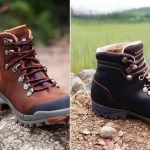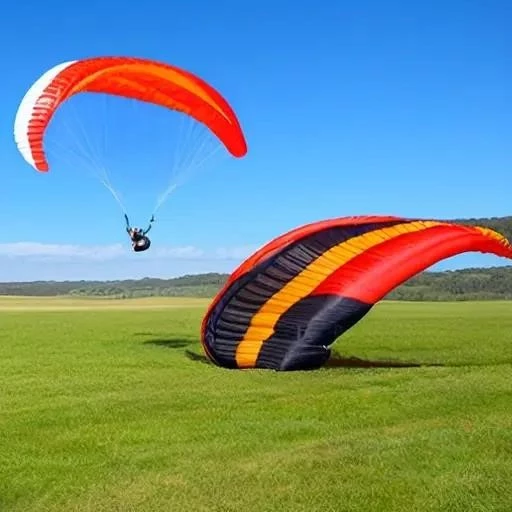Today is 10/03/2025 09:31:11 ()
Imagine launching yourself from a mountain peak, the wind whispering secrets as you glide effortlessly through azure skies, the world unfolding beneath you like a vibrant tapestry. This dream, the essence of paragliding, offers an unparalleled sense of freedom and exhilaration. But before you can truly embrace the thermals and dance with the clouds, a crucial decision awaits every aspiring and seasoned pilot: selecting the perfect paraglider wing. This isn’t merely purchasing equipment; it’s choosing your aerial partner, an extension of your will in the boundless expanse above.
The market, brimming with innovative designs and advanced technology, can initially seem daunting, presenting a bewildering array of choices for even experienced aviators. From high-performance gliders engineered for competitive racing to remarkably stable wings crafted for serene, leisurely flights, each model boasts unique characteristics profoundly impacting your safety, enjoyment, and progression in the sport. Navigating this intricate landscape requires a thoughtful approach, integrating deep personal insight into your skill level with a comprehensive understanding of a wing’s technical specifications and intended purpose. Your paraglider wing is the heart of your flight experience, dictating not only how you fly, but how confidently and safely you explore the aerial realm.
Key Considerations for Paraglider Wing Selection
| Category | Description & Importance | Key Questions to Ask |
|---|---|---|
| Pilot Skill Level & Experience | Crucial for safety and progression. Wings are designed for specific pilot competencies, from absolute beginners to world-class competitors. Aligning your skill with the wing’s demands prevents dangerous situations and fosters enjoyable learning. | How many flight hours do I have? What conditions do I typically fly in? Have I completed SIV (Safety in Flight) courses? |
| Wing Class (EN Certification) | An international standard (EN A, B, C, D, Competition) indicating a wing’s passive safety and performance level. EN A offers maximum passive safety for beginners, while EN D is for highly experienced pilots. | Am I comfortable with active piloting? Do I prioritize maximum safety or higher performance? What does my instructor recommend? |
| Weight Range & Wing Loading | Each wing has an optimal pilot weight range. Flying too light or too heavy affects speed, sink rate, stability, and handling. Wing loading (pilot weight / wing area) significantly influences agility and feel. | What is my all-up flying weight (pilot + gear)? Do I prefer a more dynamic or damped feel? |
| Performance & Handling | Encompasses glide ratio, sink rate, speed range, and responsiveness. Beginners typically prefer more damped handling; experienced pilots seek precise, agile control. Aspect ratio (wing span / chord) is a key indicator. | |
| Safety Features & Passive Safety | Refers to the wing’s inherent ability to recover from collapses and disturbances without pilot input. Higher passive safety is paramount for less experienced pilots, significantly reducing incident risk. | How important is automatic recovery to me? Am I willing to trade some performance for enhanced stability? |
Reference: For further detailed guidance on paraglider selection, consult reputable sources like Cross Country Magazine’s Paraglider Reviews.
The initial, and arguably most critical, consideration revolves around your personal skill level and flying experience. Paragliders are meticulously categorized by international standards, primarily the EN certification system, ranging from EN A to EN D and competition wings. An EN A wing, like the popular Niviuk Hook 6 or variations from the Mojo series, offers maximum passive safety, making it an incredibly forgiving choice for new pilots still honing their basic flying instincts and ground handling techniques. As you log more airtime and develop a deeper understanding of atmospheric dynamics, progressing to an EN B wing opens up new performance horizons without significantly compromising stability. However, the advanced EN C class, designed for very experienced pilots logging numerous hours annually and possessing perfect ground handling skills, demands active piloting and regular safety training, highlighting the importance of honest self-assessment.
Beyond classification, understanding the concept of weight range and wing loading is absolutely paramount. Each paraglider wing is engineered to perform optimally within a specific total flying weight – encompassing the pilot, harness, and all gear. Flying a wing too lightly can render it sluggish and less responsive, struggling to penetrate headwinds effectively, while overloading it can make it overly dynamic, twitchy, and demanding, potentially compromising passive safety. The ‘sweet spot’ is often found in the middle of the manufacturer’s recommended range, offering the best balance of comfort, agility, and glide performance. By carefully matching your all-up weight to the wing’s optimal loading, you ensure that the wing reacts predictably to your inputs, fostering confidence and amplifying your aerial adventures.
Performance characteristics, including glide ratio, sink rate, and speed range, along with the wing’s inherent handling, contribute profoundly to the overall flight experience. A lower aspect ratio, typically seen in beginner wings (e.g., 4.5-4.9), translates to greater stability and easier recovery from disturbances, prioritizing passive safety over raw speed or exceptional glide. Conversely, higher aspect ratio wings, favored by cross-country and competition pilots, offer exhilarating speed and superior glide, but demand highly refined piloting skills and quicker, more precise reactions to maintain control. The subjective ‘feel’ of a wing – its turn authority, brake pressure, and feedback – is equally vital; some pilots prefer a highly responsive, ‘talkative’ wing, while others seek a more damped, docile experience, underscoring the necessity of a test flight whenever possible.
Ultimately, safety must remain the unwavering bedrock of any paraglider wing selection. While modern wings are incredibly safe when chosen and flown appropriately, no piece of equipment can entirely negate pilot error or extreme conditions. The concept of passive safety, a wing’s natural tendency to return to normal flight without pilot input after a collapse, is a cornerstone for all pilots, especially those flying for leisure or less than fifty hours a year. Consulting with a certified instructor or a reputable paragliding school is not merely advisable; it is an indispensable step. These seasoned professionals possess invaluable insights into various models, often offering the opportunity for trial flights and ensuring that your chosen wing perfectly aligns with your current abilities and future aspirations. Their guidance can prevent costly mistakes and, more importantly, safeguard your journey in the sky.
Choosing the ideal paraglider wing is a pivotal moment, marking the transition from aspiration to exhilarating reality. It is a decision that, when made thoughtfully and with expert consultation, profoundly enhances your safety, enjoyment, and progression in this magnificent sport. By carefully evaluating your skill, understanding wing classifications, considering weight ranges, and prioritizing passive safety, you are not just acquiring gear; you are investing in countless hours of breathtaking flights and unforgettable memories. Embrace the journey of discovery, trust the seasoned advice of professionals, and prepare to elevate your aerial adventures to unprecedented heights, confidently navigating the endless blue canvas above.






